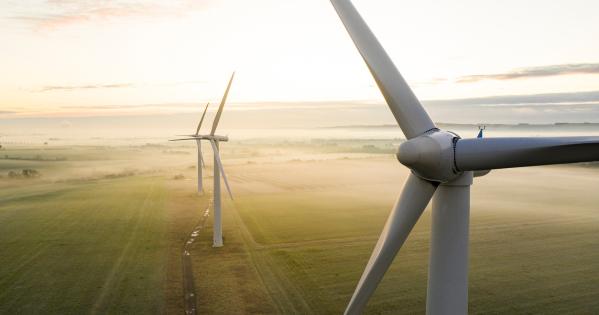SPA Professor Examines Windfalls for Local Economies

Wind energy is one of the fastest growing energy sources in the United States, yet little research has been done on the impact of commercial wind energy on local economic development.
SPA Assistant Professor David Schwegman partnered with Eric Brunner of the University of Connecticut to publish two recent papers that demonstrate the benefits of wind turbine installation to both counties and their citizens.
In April, “Windfall Revenues from Windfarms: How Do County Governments Respond to Increases in the Local Tax Base Induced by Wind Energy Installations?” appeared in Public Budgeting & Finance, chronicling how county governments use extra taxes generated by wind energy to invest in local services, such as roads and hospitals. “Commercial Wind Energy Installations and Local Economic Development: Evidence from U.S. Counties,” published this month in Energy Policy, found that wind energy installation between 1995 and 2018 led to economically meaningful increases in county GDP per-capita, income per-capita, median household income, and median home values.
“The data clearly shows that county finances improve as a result of local wind turbine installations and the greater the level of investment, the more significant the impact,” Schwegman said.
The research notes that wind energy now accounts for nearly 40% of all new commercial energy installations in the United States. In 1990, wind generated less than 0.1% of total electricity in the U.S.; by 2020, it accounted for 8.4%. Most wind farms are located in rural areas, where, Schwegman said, economies have suffered as they lose population, and the broader economy moves away from dependence on oil, mining and other traditional energy sources.
While there has been some concern about the placement of wind turbines, there is little evidence showing negative impacts from the renewable energy source. Indeed, the addition of wind energy diversified the local economies and increased the proportion of jobs in construction and manufacturing.
“The fact that you can see these county-wide, community-level net benefits could help to not only promote renewable energy adoption, but also reduce any local opposition to wind turbines,” Schwegman said.
These studies show that wind energy increases local economies and incomes. Further, the size of these benefits grows significantly with larger installed generating capacity per-capita: rural communities with multiple installations and higher wind energy capacity reap the most economic wins.
Next, Schwegman will be analyzing the physical and economic benefits of utility-scale solar with a new three-year grant he helped AU secure from the University of California Berkeley.